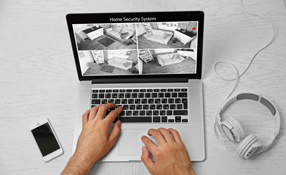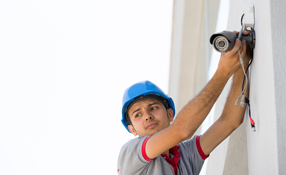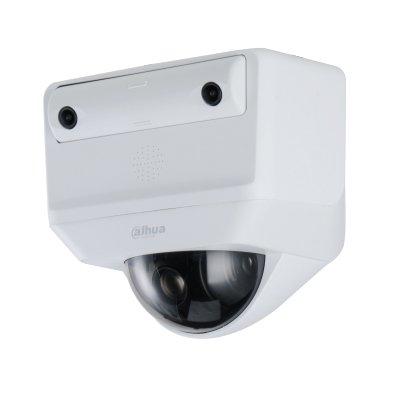A “smart home” featuring networked security devices and other home automation products will be new to IFSEC International 2016 in June. This replica smart home will be at the heart of the new home automation zone at IFSEC International (London, 21-23 June). The smart home will feature CCTV, intruder alarms, biometric readers, door entry solutions and locks, as well as wireless blinds, lighting and heating control, and 4K video and audio distribution.
“These features, along with third party products, will have the ability to be controlled by handheld remotes, in-wall and wireless touchscreens, keypads, mobile devices and even Apple watches,” explains Lee Miller, Control4 UK Area Sales Manager. “We will also be showing our own native Control4 equipment including centralised and wireless lighting control.”
“At IFSEC, you’re going to see a video door entry system, door locks which can be accessed remotely, smart lighting and automated window blinds,” he adds. “There will be interfaces to control lighting, music and interior and exterior cameras, together with distributed audio, home cinema with surround sound and 4K video distribution. The bedroom will feature keypads on either side of the bed, which can be used to control features such as lighting and security, all from one location. Touchscreens and iPads – which can control and monitor all the devices installed in the house – will be placed throughout the house.”
Control4 Pakedge network monitoring
The company will be using its newly acquired business, Pakedge, for the networking components of the system. “A home automation system is only as good as the network it sits on,” says Miller. “It is the backbone of any connected home.”
All Control4 products will sit on the Pakedge network. One of these is the processor, which communicates not only with Control4 products but also with other smart products on the network. A user interface – which can be a remote control, touchscreen, iOS or Android mobile device, keypad, or Apple watch – can control all the devices.
 |
| A popular draw of home automation is ‘mockupancy’ – where the system can be programmed to make an empty building look occupied while its owners are away from home |
Video door access control system
Video door entry is one of the biggest draws for customers of these systems, not only in single residences but also in apartment blocks. The image of a person calling at the entrance can be seen on any of the video enabled devices. What’s more, if the house is unattended the device will email an image of that person to the occupier so he or she knows who called.
The door entry system can become an access control product, with different codes for different people. For example, a cleaner can be given a code that will only be valid for a specified time period. And an alert can be sent to a mobile device, notifying an arrival.
Benefits of home automation
Home automation can be just as useful when the occupier is away from home. “Mockupancy,” as Miller terms it, is when the system is programmed to open and close blinds and switch lighting and televisions on and off, simulating the activities of occupiers and giving the impression that the house is occupied.
“The benefits of home automation are numerous and include energy management, security, safety, comfort and entertainment,” he says. “These things can be controlled locally in the home or remotely away from home.”
Miller believes that security is one of the driving forces for such systems. “Security and safety are definitely driving the home automation industry right now, along with lighting, comfort and entertainment.”
To maximise business in the home automation market, Miller says that partnering with leading device manufacturers is a good way to get business beyond your traditional market. According to a survey conducted by IFSEC International organisers, installers agree that the sector offers good prospects – 92% of them see home automation as a potential area for business growth.
Home automation vs. intelligent buildings
So what’s the difference between home automation (or “smart homes”) and “intelligent buildings?” “While the term ‘smart homes’ refers to residential property and ‘intelligent buildings’ are for the commercial sector, there are a lot of similarities between them. These include PIRs, CCTV, door entry systems and smart lighting.”
The global sensor and device market for home automation is expected to grow from $1.4bn in 2015 to $4bn in 2019, according to ABI Research. Miller concludes: “With the expanding number of products becoming intelligent, the connected home and the number of products in it continues to grow. With this, more end users are seeing the benefits and value of having a smart home, which is leading to the rapid growth of the industry.”












































